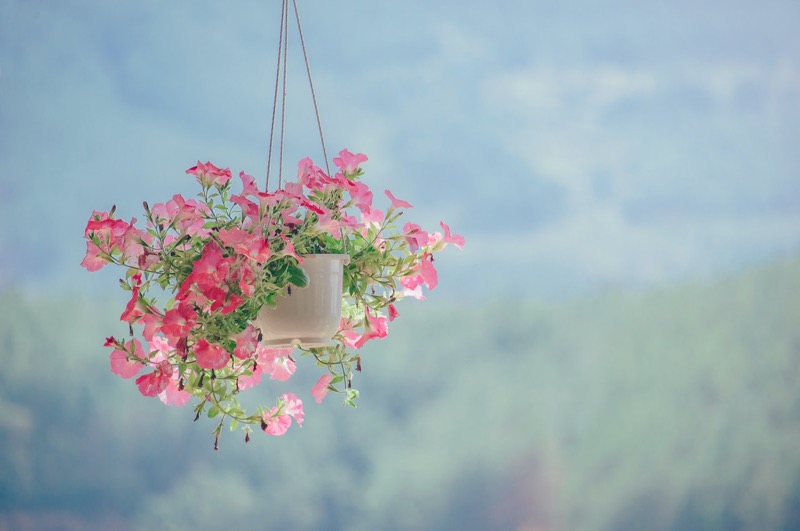It may be daunting to think of trying to grow plants and vegetables in a small backyard space. But, with proper planning and care, you can have a productive and attractive garden. Here are some tips for creating a beautiful and low-maintenance garden in your small backyard.
1. Go Vertical
Whether you have a yard or not, there’s still plenty you can do to grow food in your space. You just need to get creative—and use the vertical space! That means if you have a fence, arbor, or trellis, think about how to incorporate these elements into your growing scheme.
If you want to plant vines on an existing fence or trellis and don’t mind reaching over them each time they’re in full leaf (a fair amount of work!), then go for it! Vines like beans, tomatoes and cucumbers are easy-to-grow climbers that will give you more bang for your buck per square foot than most other vegetables. But if this sounds like too much work to be worth it for only one crop—or if climbing plants are just not your thing—there are still plenty of ways to make good use of vertical space without having any ground at all:
- Use trees as well as shrubs – trees tend towards being tall while shrubs tend toward being wide but both can take advantage of vertical growing techniques such as pruning overhanging branches so they hang down into containers instead of holding up against gravity.
- Consider using a trellis instead of a fence if you have limited space. You can plant vines on them and have them climb up into containers—or they can be used as support for other plants such as tomatoes or cucumbers that need only one sturdy stake to grow in the direction you want them to go
- If you have a balcony or patio, consider using it for growing vegetables instead of just as an outdoor room where you can relax!
2. Plant container gardens
If you don’t have enough space for a garden, consider container gardening. This is a great way to get a garden started because containers can be moved around, allowing you to grow vegetables or flowers in one spot during the summer and then move them inside during the winter. Perfect for those with limited space!
Container gardening also has many benefits:
- Less time spent weeding and watering – Because they’re so easy to move around and water, container gardens require less maintenance than traditional gardens do.
- You won’t need trowels or hoses—just empty out your containers when they’re full of soil!
- Less risk of pests – This is another perk of container gardening that comes with simplicity: because there are fewer leaves on your plants (which would attract bugs), there’s less chance that pests will find their way into your home-grown produce–or at least as much chance as any other small-space gardener faces.
- Less risk of damage – Because container gardens are smaller, they’re less likely to get damaged by strong winds or heavy rain than traditional gardens are.
3. Add edibles to your landscape
Incorporating edibles into your landscape can also be a great way to add food to your diet. If you have little time to grow your own vegetables, consider planting herbs like lemon balm and mint in pots on the porch. These plants are easy to grow and will thrive during warm months when the sun is at its peak. You’ll be able to enjoy these herbs year-round as well!
Another great way to add edibles into your landscaping is by including them near the house or patio. This makes it easy for you when it comes time for harvest because they will only be a few steps away from where they need to go once they’re ready!
4. Think about landscaping alternatives
If your yard is small, or if you simply don’t like mowing, consider alternatives to a lawn. You can sacrifice some of the space for flowerbeds and vegetable plots. And make sure you include a variety of plants so that blooms will be abundant throughout the growing season.
Groundcovers are another great way to reduce maintenance. They’ll look lovely when they’re in bloom, but once their flowers fade away, they’ll blend into the background without requiring additional trimming or weeding.
Trees and shrubs also have many benefits: privacy; shade from sunlight; windbreaks that keep plants from being buffeted by strong gusts—the list goes on!
If you’re looking for ways to reduce your yard work, consider using a mulching mower. This type of equipment cuts grass into small pieces instead of leaving behind long clippings that need raking or bagging.
5. Find out what will grow best in your area
When you know where to plant what, the next step is figuring out how much space you have available for the plants. If you’re working with a small backyard garden, it is important to be strategic about how and where your plants are placed so that they get the most out of their small spaces.
A good way to do this is by growing vertically instead of horizontally. This can save a lot of room on your ground level!
You can also make use of raised beds. These are essentially boxes that are built off the ground with soil in them. They allow you to plant your plants without having to worry about compacting the soil, which can be dangerous for certain plants.
6. Build a raised bed or two
Raised beds are a great way to get the most out of your small backyard space. They’re also an excellent choice if you’re a novice gardener, as they make it easier to keep track of what’s going on in your garden and ensure that everything gets watered properly. A raised bed can be made from a variety of materials, including wood or recycled plastic, bricks or stone, and even old pallets (just make sure they have not been treated with toxic chemicals.)
Small outdoor spaces can work well for gardening
While a small space may not seem like it could be a good fit for gardening, you’ll be surprised at what you can grow even in the smallest of areas.
The key to making your home garden work is by maximizing vertical space and utilizing containers. Container gardening allows plants to grow upwards so that they take up less floor area than if they were planted directly into the ground. Growing vertically also makes it possible for one plant to give two harvests: first from its roots, then from its fruits or leaves when the season changes and produces mature enough to pick.
This technique works well with herbs such as basil and oregano—and since these are easy-to-grow perennials (meaning they live more than two years), once you’ve established them in your container garden they’ll continue producing new crops every year without any additional effort on your part!
So, if you’re looking for some help with gardening and want to start small, then this article is for you! We hope we’ve given you some great ideas on how to make the most out of your limited space. Happy planting!


